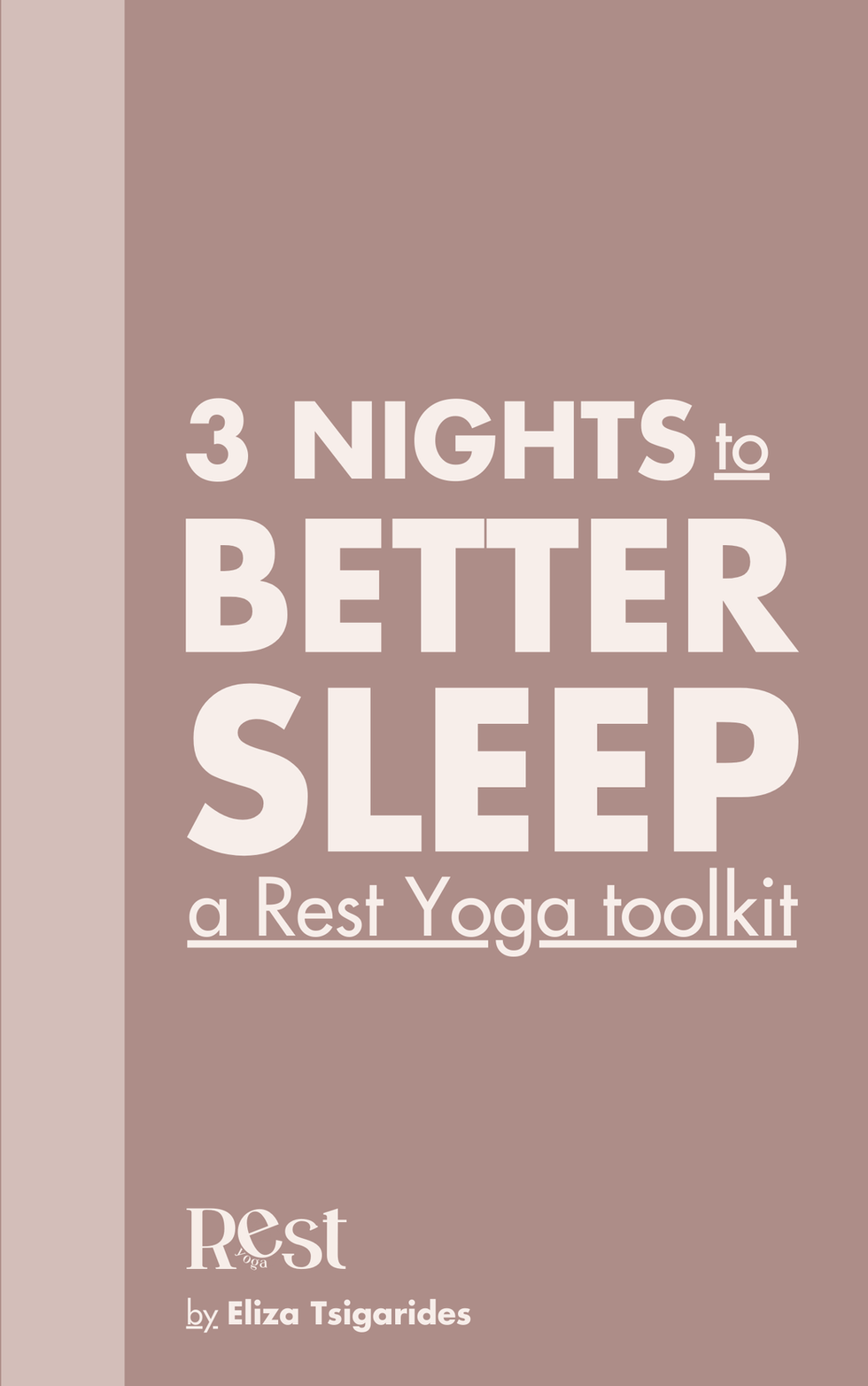Yoga Nidra for Better Sleep: A Rest Practice That Lasts Beyond the Mat
- Aug 28
- 4 min read
I used to believe my worth was tied directly to how much I could do for others. I’d work around the clock and wear busyness like a badge of honour. I'd give 120% of my energy and put everyone else first, with zero boundaries.
I thought this made me a “good person.” (Spoiler: it didn’t. It made me exhausted and resentful.)
Rest felt like a waste of time. Anytime I tried, I’d end up rearranging furniture or cleaning the kitchen instead of being still. Slowing down made me feel anxious and guilty.
These days — I still get those pangs of guilt when I take time for myself — I'm human, and sometimes I still need a gentle reminder that it’s ok to slow down. The difference is now I know how to sit with these feelings instead of allowing them run the show. The shift came through yoga, more specifically, through my Rest practices: restorative, yin, and yoga nidra.
When I skip them, I notice it straight away.
I overwork.
I get snappy.
I feel more anxious than usual.
Since becoming a mama my practice looks different. My boundaries need re-establishing daily. Time feels scarce. Guilt shows up in new ways.
But one practice has stuck with me through it all was yoga nidra. Especially on the nights when sleep feels like a mythical creature.
What Is Yoga Nidra?
Think of yoga nidra — or “yogic sleep” — as the reset button your nervous system didn’t know it needed. Unlike meditation (where you sit and try to wrestle your thoughts into silence), yoga nidra is done lying down.
You’re guided through breath, a body scan, intention setting, and sometimes visualisations. All you have to do is get comfy and listen to the guidance.
It’s completely effortless. Fidgeters, busy minds, tired parents, multitaskers are all welcome. Studies even show it lowers stress, calms anxiety, eases pain and helps you get better quality sleep by activating your body’s natural chill-out mode.
How Yoga Nidra Helps You Sleep Better
If you’ve ever laid in bed replaying every awkward conversation you’ve ever had… yoga nidra for better sleep is for you.
Here’s why:
It shifts your nervous system response. Moving you away from fight-or-flight and into deep Rest.
It gives your mind something to focus on. Instead of spiralling thoughts, you’re guided step by step.
It improves sleep cycles. It helps boost deep sleep and overall sleep quality.
It reduces tension. A body scan helps you let go of that jaw clenching you didn’t even realise you were doing.
How to Practice Yoga Nidra for Sleep
1. Find your spot. Lie down somewhere cozy — bed, sofa, or even a blanket pile on the floor.
2. Press play. Start with this guided recording for sleep. I did, and sometimes still do listen to recordings, especially on the days that my brain feels tired or overstimulated.
3. Breathe deep. Slow belly breaths signal your body that it’s safe to relax. If deep belly breaths aren't for you, try sighing your breath out.
4. Follow the voice. Let the guidance carry you through body scans and visualisation.
5. Set an intention. Something simple like: “I Rest deeply tonight.”
When Is The Best Time To Practice Yoga Nidra?
Yoga Nidra can be used for many purposes, but for the purpose of sleep, the perfect time to do Yoga Nidra is right before bed. It might sound obvious, but if you're using nidra for sleep, make sure you are ready for sleep when you lie down. No remaining tasks to do, teeth brushed and cosy pjs on.
If you're feeling overwhelmed during the day, a quick 20-minute session can work wonders in reducing stress and recharging your energy. Some people say a short Yoga Nidra practice feels just as rejuvenating as a full nap!
Let me be clear though, yoga nidra is not a replacement for sleep. It helps you get better quality sleep. There’s a lot of misinformation that 20 minutes of yoga nidra is equivalent to 4 hours of sleep, and this is not true.
Try this midday reset nidra here.
The Long Term Benefits of Yoga Nidra
Yes, yoga nidra helps you fall asleep and stay asleep. But it also does so much more:
Builds emotional resilience (my biggest takeaway, hands down)
Boosts focus and clarity
Lowers blood pressure and stress
Helps you feel more connected to yourself
For me, it’s been a game-changer in how I show up — as a mama, as a yoga teacher, and as a human who needs Rest just as much as work.
So if you’re lying awake at night, staring at the ceiling, try giving yoga nidra a go. Plug in your headphones, press play, and let yourself be guided into Rest.
And if you’d like more tools to support your sleep, download 3 Nights to Better Sleep: A Rest Yoga Toolkit — it’s packed with tips and recordings to help you drift off more easily.
Restfully
Eliza
.png)






Comments